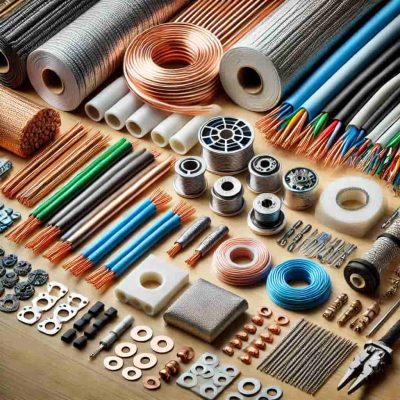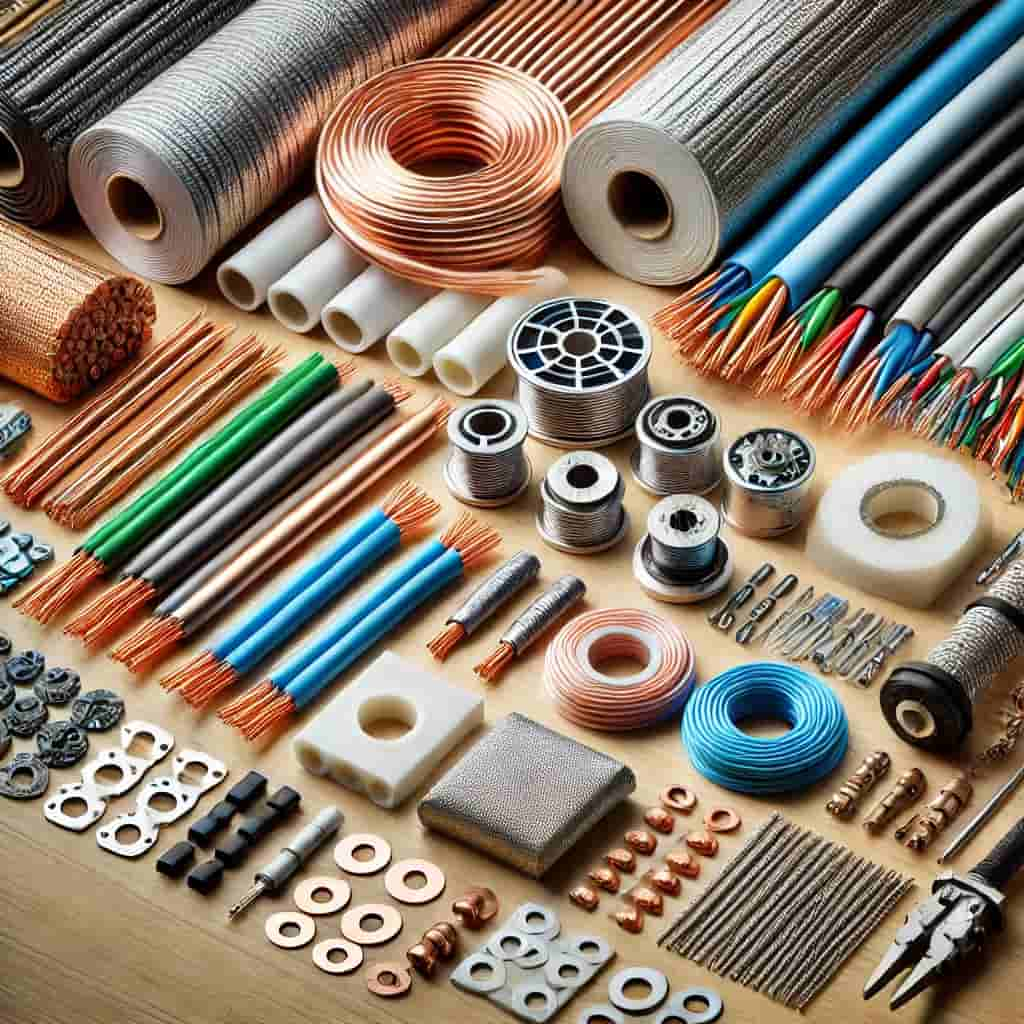From automotive manufacturing to aerospace engineering, and even the everyday household appliance, these harnesses are the backbone of reliable electrical connections. Designing a custom wiring harness isn’t just about putting wires together—it’s a multifaceted process that requires a solid grasp of mechanical, electrical, and manufacturing principles. That’s why we’re excited to share our top ten tips for designing custom wiring harness assemblies. Our goal? To help you simplify the design process, ensure your harnesses are top-notch, and show you how Konnra can be your go-to partner in creating the best wiring solutions for your needs.

1. Understand the Needs of Your Wiring Harness
Before diving into the design process, it’s essential to have a thorough understanding of the specific requirements for your custom wiring harness. This involves knowing the environment where the harness will be used, the electrical power and signal requirements, and any physical layout constraints.
Assess the Electrical Requirements: Start by determining the current and voltage requirements. Identify the types of signals (analog, digital) that need to be transmitted and consider any necessary shielding to prevent interference.
Environment Considerations: Will the harness be exposed to extreme temperatures, moisture, or chemicals? Understanding the environmental conditions will guide you in selecting the appropriate materials and design features.
Physical Layout: Consider the available space, the required length of the harness, and how it will be routed through the equipment. Ensure that there is enough flexibility in the design to accommodate future modifications or expansions.
2. Material Selection Matters
Choosing the right materials is crucial to ensuring the performance and durability of your custom wiring harness. The materials selected for the conductors, insulation, and shielding will directly impact the harness’s ability to handle electrical loads, resist environmental conditions, and withstand mechanical stress.
Conductors: Copper is the most commonly used conductor material due to its excellent conductivity and relative affordability. However, in weight-sensitive applications like aerospace, aluminum might be considered despite its lower conductivity.
Insulation Materials: PVC, Teflon, and silicone are common choices for insulation. The selection should be based on the operating temperature, chemical exposure, and mechanical flexibility required by the application.
Shielding: If your harness will be used in environments with high electromagnetic interference (EMI), selecting the right shielding material, such as foil or braided wire, is vital for protecting signal integrity.
3. Plan the Wiring Layout and Routing
A well-planned layout is key to an efficient and effective custom wiring harness. Proper routing can reduce signal interference, optimize space usage, and simplify the installation and maintenance processes.
Optimize Harness Length: Wherever possible, minimize the length of the wires. This not only reduces voltage drop and signal degradation but also saves on material costs. However, be mindful of physical constraints and ensure the layout allows for easy installation and maintenance.
Avoid Sharp Bends: Sharp bends in the wiring can lead to stress points and potential failure over time. Always design with generous bend radii to extend the life of the harness.
Secure the Wiring: Use appropriate clamps, ties, and guides to secure the wiring in place. This prevents the harness from shifting during operation, which could cause wear or damage.
4. Choose the Right Connectors and Configuration
Connectors are the critical interface between the wiring harness and other components. Selecting the right connectors and configuring them properly is essential for ensuring system reliability and ease of maintenance.
Select Appropriate Connectors: Choose connectors based on the current-carrying capacity, environmental resistance, and space constraints. Harness manufacturers often provide standardized connectors that can simplify the design process and ensure compatibility with other systems.
Balance Insertion and Retention Forces: Connectors should be easy to connect and disconnect but also secure enough to stay connected during operation. Consider using locking mechanisms to prevent accidental disconnections.
5. Separate Signal and Power Lines
To prevent electrical interference, it’s crucial to separate signal lines from power lines within your custom wiring harness. Power lines carry higher currents, which can induce noise in nearby signal lines, potentially leading to data corruption or system malfunction.
Physical Separation: Wherever possible, route signal and power lines along different paths. If they must cross, do so at right angles to minimize inductive coupling.
Twisting Signal Lines: For signal lines that are particularly sensitive to interference, twisting them can help cancel out induced noise.
6. Consider Protection: EMI and RFI
Electromagnetic interference (EMI) and radio frequency interference (RFI) can wreak havoc on your wiring system, causing data loss, performance degradation, and even damage to your equipment. To minimize the impact of EMI and RFI, consider incorporating protective measures into your design.
Use Shielding: Incorporating foil or braided shielding within the harness can significantly reduce the impact of EMI and RFI. These materials act as barriers, preventing external noise from affecting the signals carried by the harness.
Identify High-Risk Environments: Industries like telecommunications, manufacturing, and healthcare often operate in environments with high levels of electromagnetic noise. In such cases, adding extra layers of protection through conductive coatings or specialized shielding materials can be crucial.
7. Test and Validate the Wiring Harness
Testing and validation are critical steps in ensuring the reliability of your custom wiring harness. Conducting thorough testing before deployment can help identify and resolve potential issues, ensuring long-term performance.
Continuity and Insulation Resistance Testing: These tests confirm that all electrical connections are intact and that the insulation is effectively preventing unwanted current flow.
Environmental Testing: Simulate the conditions the harness will face in the field, such as extreme temperatures, humidity, and vibration, to ensure it can withstand the operational environment.
Analyze Test Data: Use the results from these tests to make necessary adjustments and improvements to the design before finalizing the harness.
8. Embrace Modular Design
Modular design can significantly enhance the flexibility and maintainability of your custom wiring harness. By designing harnesses in interchangeable modules, you can simplify both the installation process and future upgrades.
Quick Connectors: Incorporate quick connectors to facilitate easy assembly and disassembly of different harness sections. This is particularly useful in complex systems where different modules need to be replaced or upgraded periodically.
Redundancy: In critical applications, consider designing redundant harness paths. This ensures that if one harness fails, a backup is available, minimizing system downtime.
9. Plan for the Environment
Environmental planning is a crucial aspect of custom wiring harness design. The harness must be capable of performing reliably in the specific environmental conditions it will encounter.
Temperature and Moisture Considerations: Select materials and designs that can withstand the expected temperature ranges and potential exposure to moisture.
Mechanical Stress: Plan for any mechanical stresses the harness might encounter, such as vibrations, bending, and stretching. Ensure the harness is robust enough to handle these stresses over the long term.
Longevity and Reliability: Choose materials and designs that will maintain their integrity over the lifetime of the product. Consider potential wear and tear and select materials that resist degradation.
10. Let Our Experts Help You
Designing a custom wiring harness can be a challenging process, with numerous factors to consider, from material selection to proper routing and shielding. Each choice you make directly influences the performance and durability of your harness. This is where Konnra, as a leading harness manufacturer, steps in with our wealth of expertise to guide you through these complexities and deliver customized solutions perfectly aligned with your needs.
Expert Consultation: Our seasoned team at Konnra is here to assist you at every stage of the design process. We’ll help you make informed decisions that enhance the efficiency, reliability, and longevity of your wiring harness.
Tailored Solutions: Whether your project is straightforward or highly intricate, Konnra specializes in crafting custom solutions that meet your exact specifications, ensuring that your harnesses are perfectly suited to your application.
Seamless Collaboration: Working with Konnra means partnering with a team that’s committed to your success. We help you save time, minimize risks, and achieve the best possible outcomes in your wiring harness design, making the process smoother and more effective.
Let Konnra be your trusted partner in designing high-quality, reliable wiring harnesses that stand the test of time.










